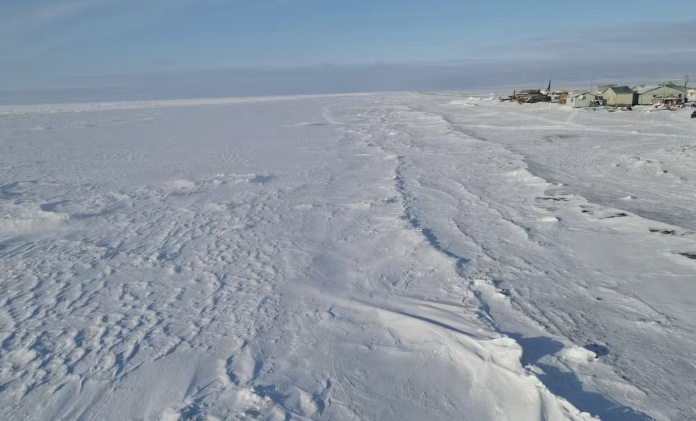Arctic sea ice loss and fierce storms leave Kivalina’s volunteer search and rescue fighting to protect their island from climate disasters
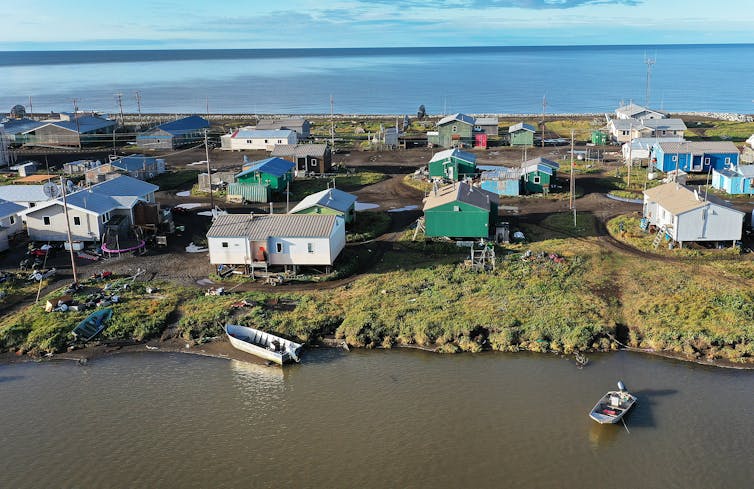
By P. Joshua Griffin, University of Washington
As winds and waves from Typhoon Merbok devastated communities along the coast of Western Alaska in 2022, Reppi Swan Sr.’s phone began to ring at Kivalina, a barrier island 80 miles above the Arctic Circle.
A neighboring family had lost 3 feet of land to the rumbling lagoon, and their home was now sitting just 6 feet from the angry water’s edge. Reppi called his brother Joe Swan Jr. and quickly slid into his insulated rain gear.
As a volunteer first responder, Reppi plans for emergencies like this. He and his wife, Dolly, had been patrolling the island for dangerous erosion every few hours during the storm. To prepare, he had already inspected the city’s heavy equipment and located a pile of boulders left over from a recent construction project.
Working through the rain, Reppi delivered boulders to the threatened home. With their cousin Carl Swan serving as a spotter, Joe carefully arranged the boulders with a backhoe to stabilize the bank. It would hold at least until the storm subsided.

With protective sea ice declining and warming Pacific waters supercharging fall storms in the Bering and Chukchi seas, Alaska Native villages like Kivalina are experiencing growing risks to coastal livelihoods and critical infrastructure, including runways. Reppi’s efforts reflect the challenges many front-line communities face as they struggle with the effects of climate change.
Dealing with disasters has become normal
Indigenous governments, nonprofits, hunters and first responders from Iñupiaq, Yupik and Unangan communities across Alaska have long been preparing for today’s climate hazards. They have created initiatives from coastal monitoring to relocation planning, yet state and federal support programs are underfunded and poorly structured for the scale of today’s challenges.
Kivalina, an Iñupiaq community of 500 people, has been dealing with climate-fueled erosion and flooding for decades. Nearly 20 years ago, it was one of four villages the U.S. government determined to be facing “imminent danger.” In 2009, 27 additional villages were added to the list.
Over the years, Reppi, Joe and scores of other volunteers in Kivalina have improvised sea walls with everything from sandbags to sheets of metal cut from the chassis of an abandoned fuel plane.
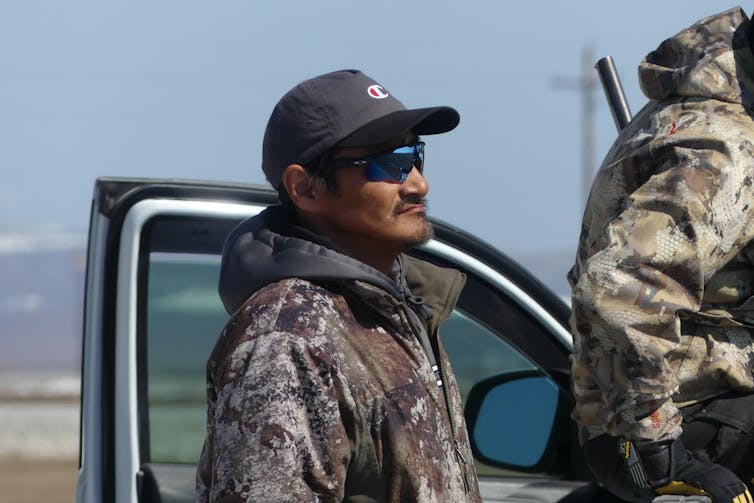
As a field officer during such incidents, Reppi reflects on how difficult it is to send anyone into harm’s way, whether to search for a lost hunter or to save homes and infrastructure. He remembers one storm in which he put a lifeline on his volunteers as they tried to bolster the shoreline. “That was the hardest thing I had to do,” Reppi recalls, “because one of my guys had to stay down there and tie each super sack together. To top that off, the 8-foot to 10-foot waves would just engulf them completely.”
He talks about Typhoon Merbok with the calm of someone for whom storm readiness and response have become normal parts of everyday life. Because they have.
‘We just can’t adapt this fast’
For Indigenous nations around the world, the roots of climate risk today are often colonial in origin. Kivalina’s “uneasiness” with fall storms began shortly after 1905, when the U.S. Office of Education built a school on the island, and began a multidecade process to forcibly settle the autonomous and seminomadic Kivalliñiġmiut nation.
In 1981, after decades of deliberation, Kivalina’s municipal government initiated relocation planning as a means to gain running water and sewer services and to alleviate overcrowding. It was an attempt, as the elder Joe Swan Sr. puts it, to gain “breathing room” so that future generations might flourish. However, planning stalled in 2008 because of a disagreement between traditional knowledge holders in Kivalina and the U.S. Army Corps of Engineers over the suitability of the community’s chosen site.
Kivalina’s relocation has now come to be framed as a response to climate change, but the initial needs that drove relocation planning still remain.
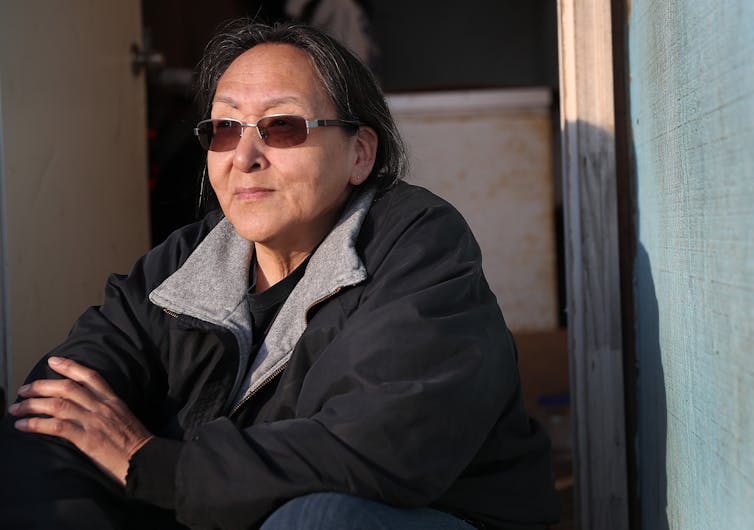
“We’re an adaptable people,” Colleen Swan, Kivalina’s city administrator, told me when I started my doctoral studies 12 years ago, “but since 2004, we just can’t adapt this fast.”
That was the year pieces of the island began shearing off into the sea.
The local value of the Arctic’s diminishing sea ice
Historically, Kivalina’s sea ice would form early enough to protect the coast from fall storms. But with climate change, it forms much later, if at all, leaving the shoreline vulnerable to increased wave activity.
On March 6, 2023, when Arctic sea ice hit its maximum extent for the year, it was the fifth-lowest maximum extent on the satellite record. Kivalina had open water less then 2 miles (3.2 km) out from town, a fraction of what’s needed for a successful bowhead whale hunt.
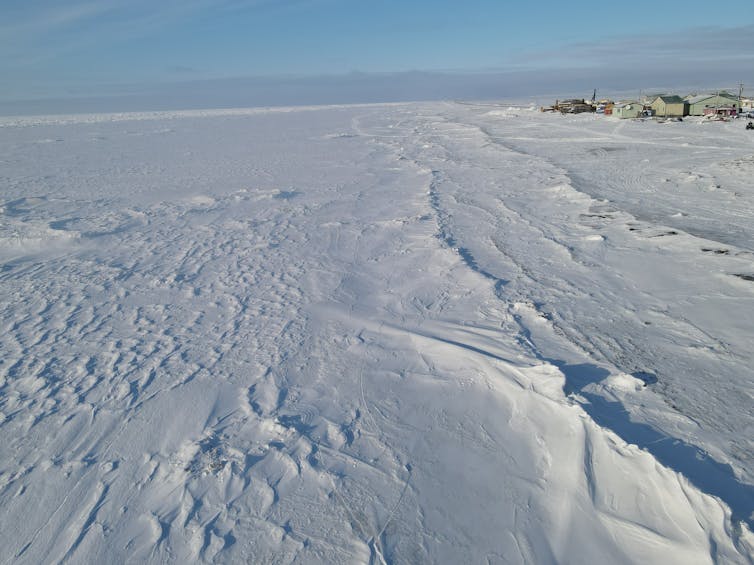
.
In 2008, Colleen was among local leaders who initiated the landmark climate justice lawsuit Kivalina v. ExxonMobil. The community sought up to US$400 million in restitution from the 24 largest greenhouse gas emitters in the U.S., companies whose profits are driving climate change. That would have been enough to cover the costs of comprehensive village relocation.
The case was dismissed by a federal court, a decision upheld by the 9th U.S. Circuit Court of Appeals in 2012. A year later, the Supreme Court refused to consider any further appeal.
With the media attention generated by the lawsuit, Colleen has become globally recognized as a front-line leader for climate justice. She has spoken across the U.S. and was part of an Indigenous delegation to the U.N. climate change conference in Copenhagen in 2009. Today, she’s busy addressing climate change on a different scale.
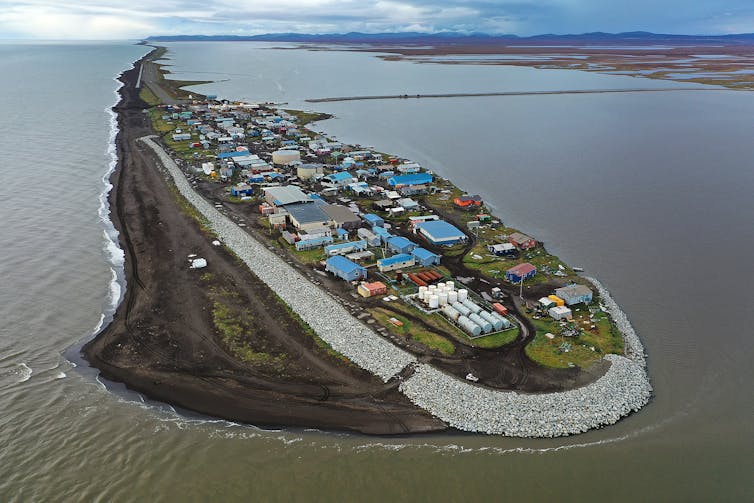
Colleen now manages Kivalina’s Volunteer Search and Rescue, known as SAR, and her brother Reppi serves as its president. Kivalina SAR is an association of hunters and first responders that plays a crucial role in community safety, coastal resilience and hunter support. But climate change has changed the nature of the organization.
“In the past, search and rescue looked for people who were lost or late returning from a hunt.” But with late freeze-up, thin ice and melting permafrost, she explains, “We’re spending more time helping people because of changes to environmental conditions.” Through fundraising, capacity building, and strategic partnerships, Colleen is building up SAR to respond to new hazards as it faces a rapidly changing environment.
Infrastructure investments remain unfinished
From 2008 to 2009, the Army Corps of Engineers constructed 1,600 feet of a planned 2,000-foot rock revetment wall to help protect the island. These partial protections, built when funds were available, have been effective, but they leave critical infrastructure and lagoonside homes exposed – as Typhoon Merbok made clear. As Reppi tells me, “We’re always going to have erosion.”
When erosion from fall storms threatened the airport runway in 2019, city leaders made the difficult decision to redeploy boulders from the existing rock revetment.
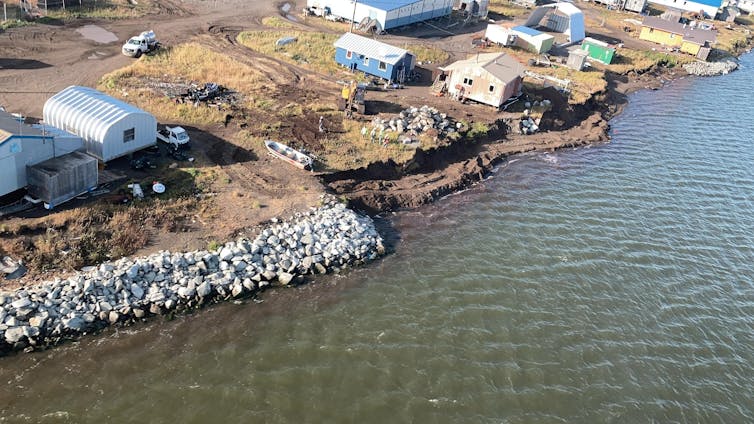
Without comprehensive planning and funding, key segments of the community remain at risk. Kivalina’s first responders must remain vigilant.
After 10 years of lobbying state and federal agencies, Kivalina’s tribal and city councils secured an 8-mile evacuation road to Kisimiġiuqtuq Hill that opened in November 2020. With the state of Alaska compelled by a lawsuit to remedy its systemic underfunding of Alaska Native schools, the Northwest Arctic Borough School District joined the project, opening a new school at Kisimiġiuqtuq Hill in November 2022.
Yet these achievements have also brought new concerns, and Reppi and Colleen are preparing their volunteers to respond to other types of problems, such as road accidents or stranded vehicles.
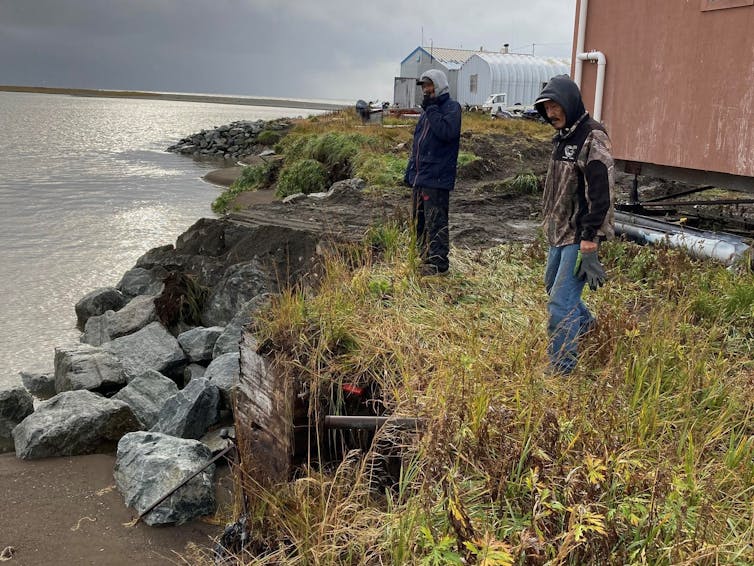
Since Kivalina’s Search and Rescue purchased its first truck in the summer of 2021, Reppi has made regular patrols to study every bend of the poorly lit and steeply pitched road – often through blowing snow. When Kivalina’s children began riding a school bus for the first time, he followed close behind – up and back, three times a day – just in case.
At times this winter, Kivalina’s school bus has been without a certified driver, or sidelined with mechanical issues. When the transportation burden falls on individual families, those without a vehicle, or unable to afford the high cost of fuel, are missing school outright. Lacking adequate snow removal equipment, heavy snow and high winds kept Kivalina’s school closed the entire month of March.
Community efforts fill critical adaptation gap
While Kivalina, like many other Indigenous communities, has been clear about its climate adaptation priorities, support from federal and international institutions has been limited.
The Biden administration recently made $115 million available to help 11 Indigenous communities with relocation, but the Army Corps estimated Kivalina alone would need $250 million to $400 million. Kivalina wasn’t on the list.
Indigenous coastal communities bear a disproportionate amount of risk from climate change, and the costs of adaptation often go uncompensated. Without comprehensive investment in local priorities – from planning and infrastructure to capacity-building – organizations like Kivalina’s Search and Rescue will continue to fill a critical gap, performing the invisible labor of climate adaptation.![]()
P. Joshua Griffin, Assistant Professor of Marine and Environmental Affairs and American Indian Studies, University of Washington
This article is republished from The Conversation under a Creative Commons license. Read the original article.


